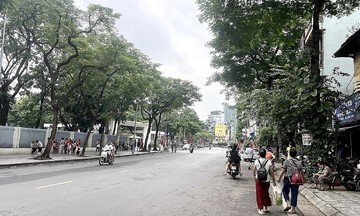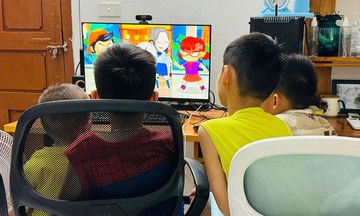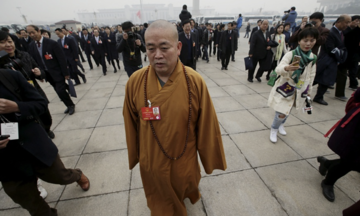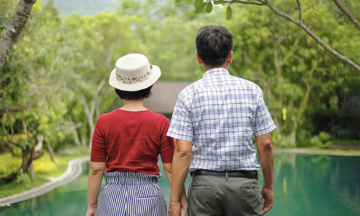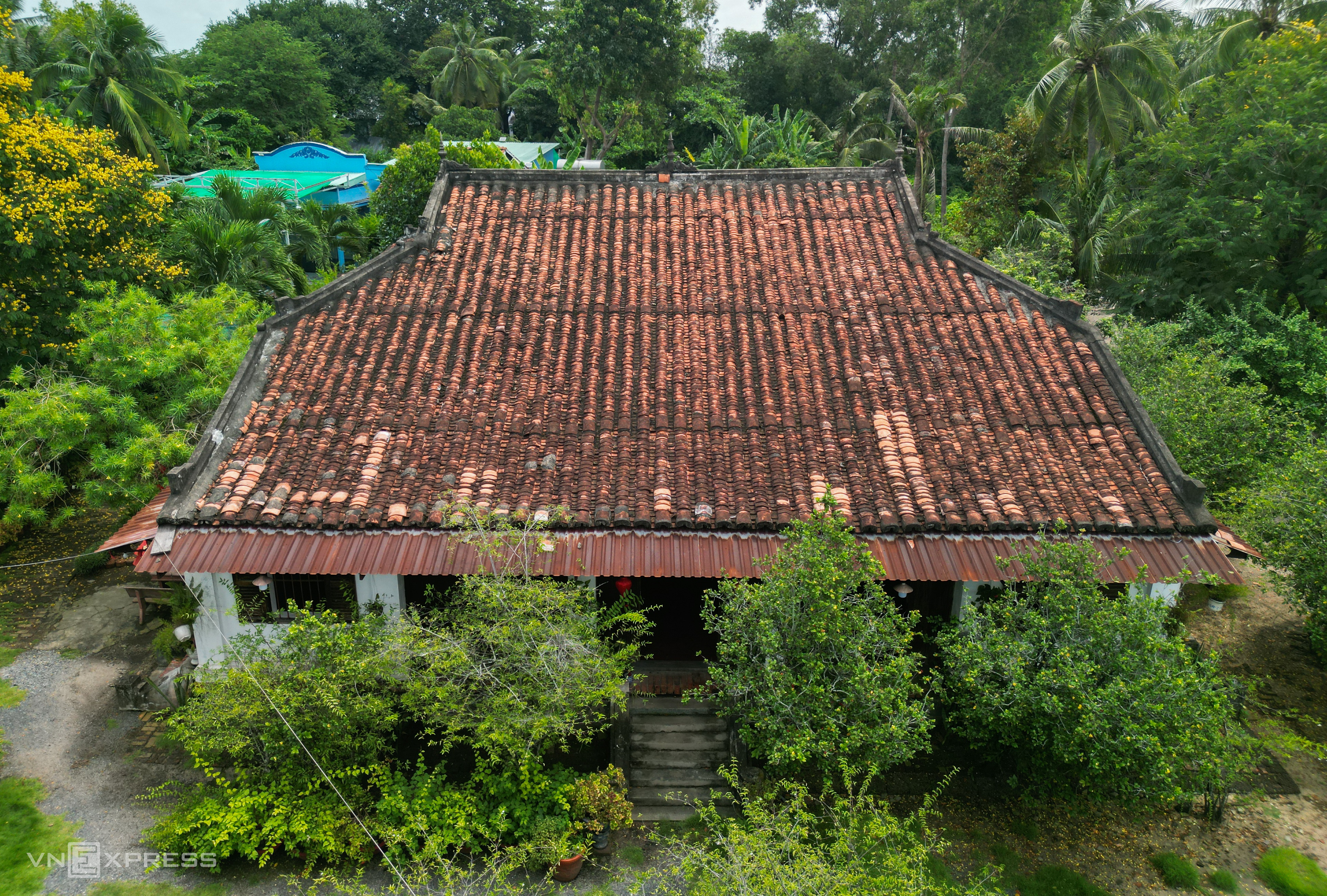 |
The white-painted house, 13 m wide and 21 m long, sits at the end of an alley off National Highway 1, surrounded by a lush garden with trees over half a century old. Quynh Tran |
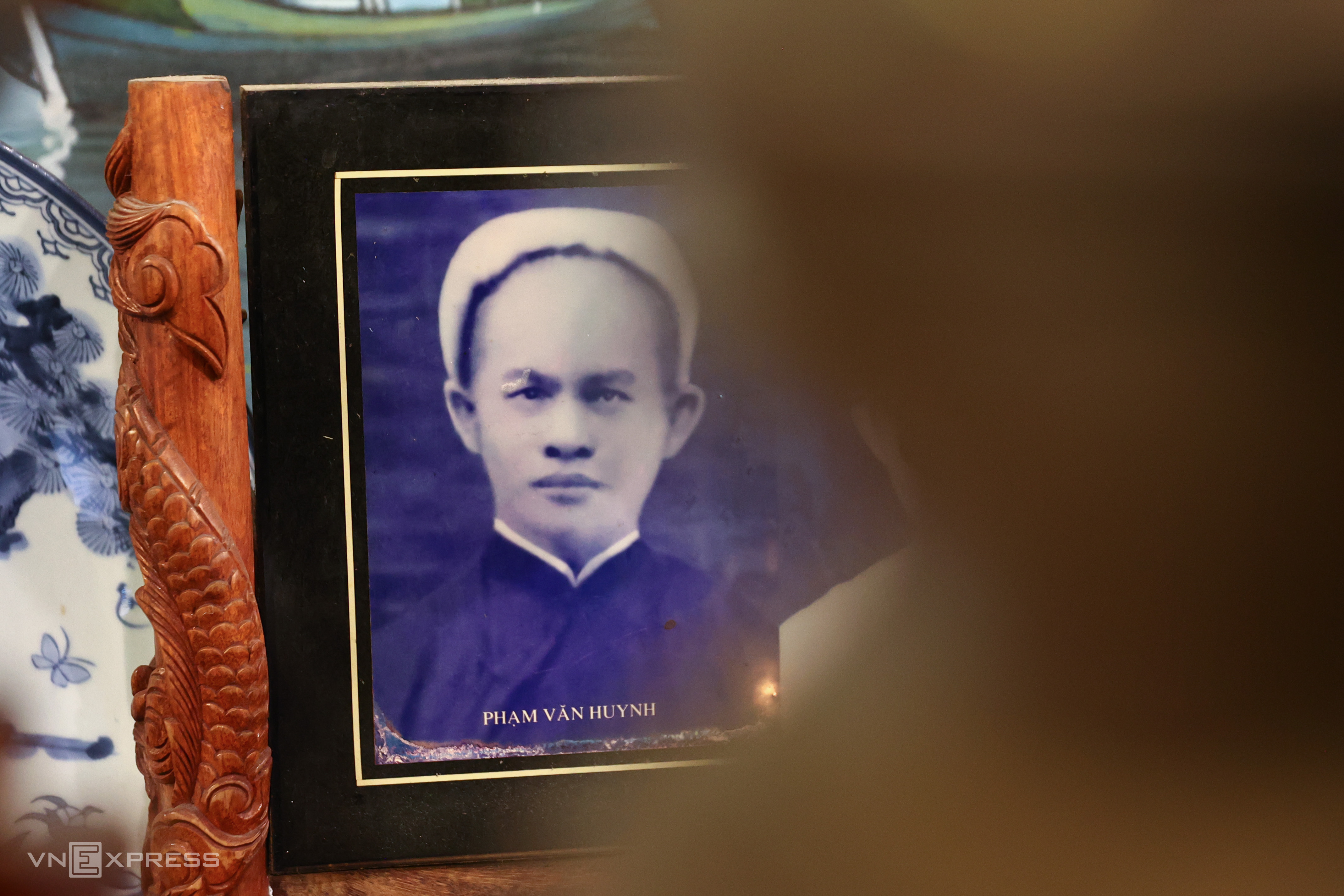 |
Built on a solid elevated foundation, the house features brick walls and traditional red brick steps. The main and side doors are made of wood with simple carvings and adorned with surrounding plants. Quynh Tran |
The historic house, once belonging to Go Den district chief Pham Van Huynh (also known as Huyen Huynh), was recognized as a city-level historical site in 2014.
Huynh Kim Phu, 66 (Huynh's 4th generation grandson), the current caretaker, explained that Pham Van Huynh originated from the Cho Lon area. Born into a wealthy family, Huynh studied in France from a young age. Upon returning to Vietnam, he was appointed district chief of Go Den, an area stretching from the former Binh Chanh district to present-day Ben Luc (Long An).
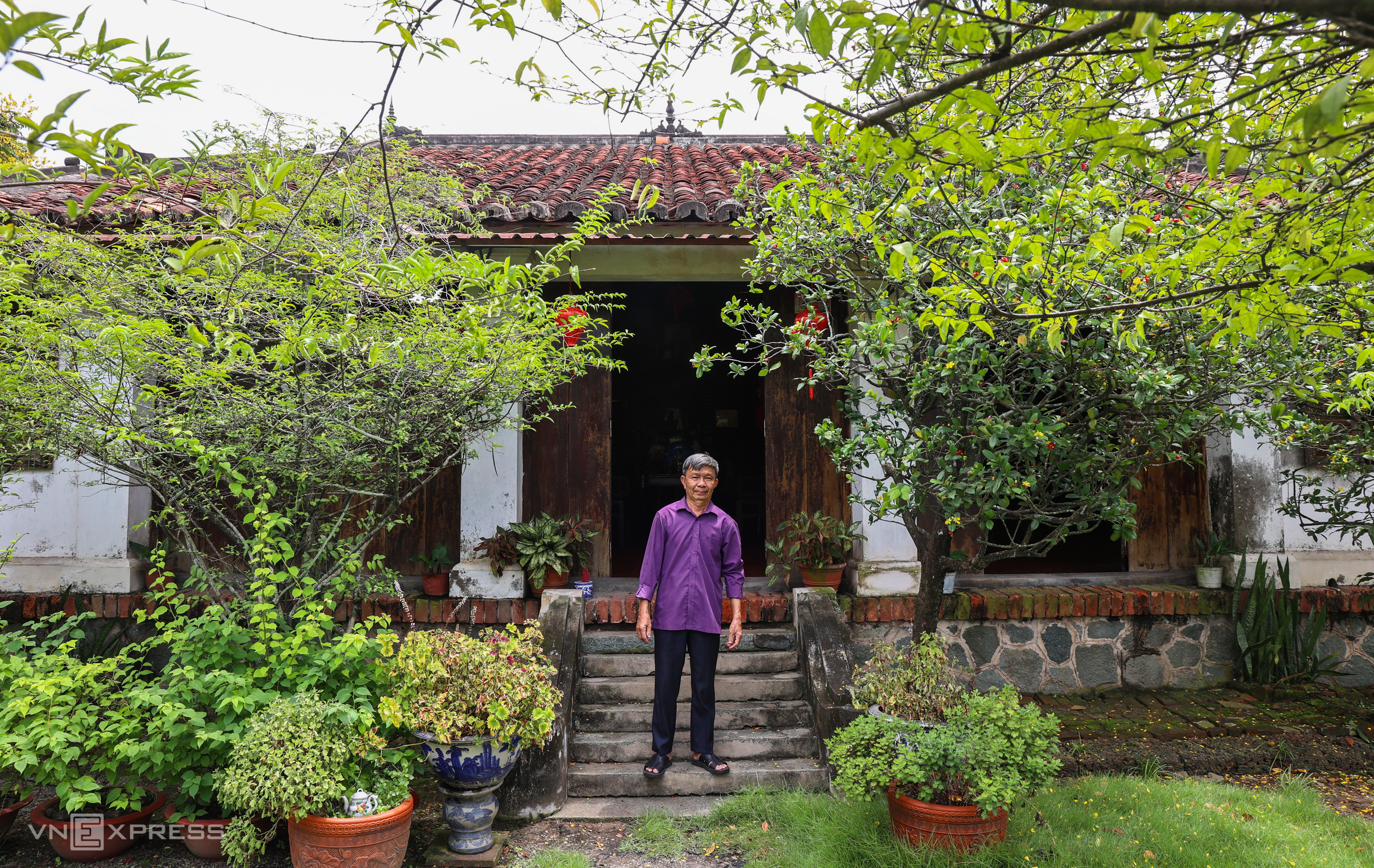 |
The roof is tiled with yin-yang tiles, common in traditional Vietnamese architecture. The roof ridge is decorated with embossed patterns. According to the homeowner, most of the roof retains its original tiles. Quynh Tran |
Huynh Kim Phu stands beside the district chief's house, now the family's ancestral hall, on Tuesday morning.
According to Phu, upon taking office around 1885, Huyen Huynh purchased this partially constructed house from a wealthy local. The district chief retained the entire construction crew from central Vietnam to complete the house, finishing it in 1900.
The Go Den district chief was among the wealthiest in the region, possessing vast land holdings. Huyen Huynh leased land to tenant farmers for rice cultivation and collected taxes. A nearby small canal, still existing today, once served as a docking point for numerous tenant farmer boats to measure their rice harvest.
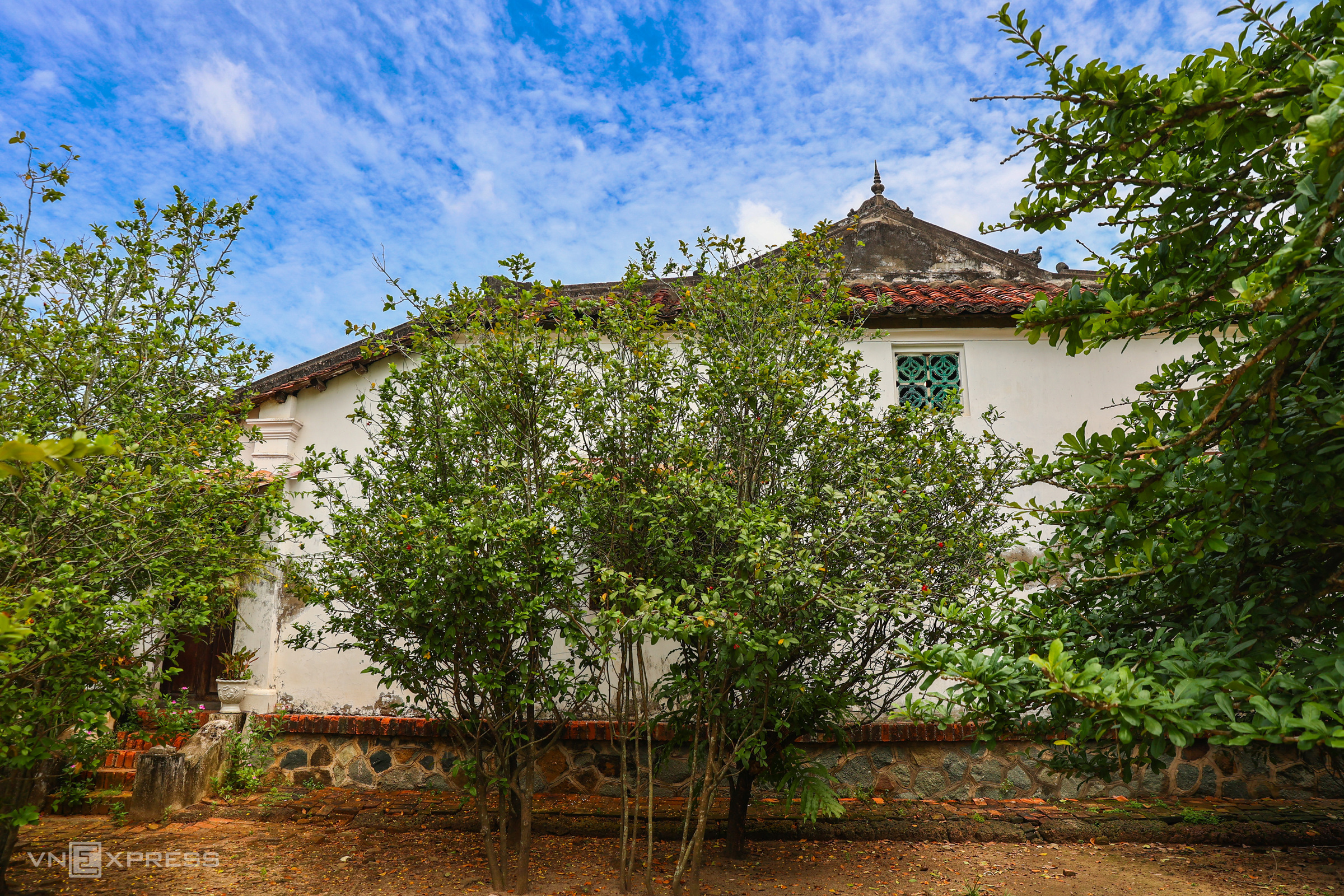 |
The architecture reflects a southern Vietnamese style, with the main hall at the center designed in the "tam gian nhi ha" style (three compartments and two wings). The floor is paved with red hexagonal tiles, the door frames are uncarved and unlacquered. The truss system consists of 36 columns made of precious woods like cam xe and mat, cylindrical in shape and resting on green stone bases. Quynh Tran |
The white-painted house, 13 m wide and 21 m long, sits at the end of an alley off National Highway 1, surrounded by a lush garden with trees over half a century old. Quynh Tran
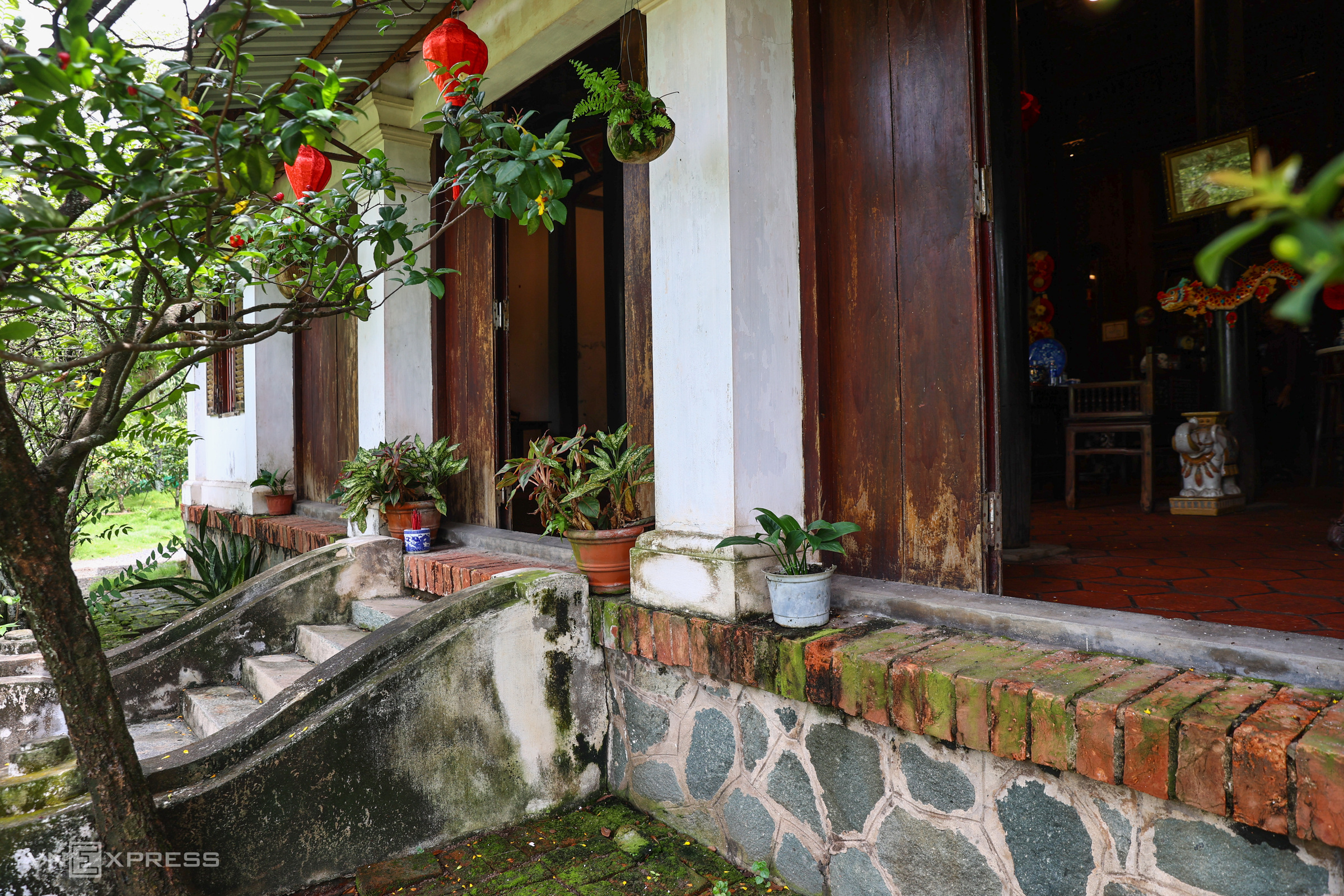 |
A wooden horizontal lacquered board inscribed with the Chinese characters "Long Quang hieu," crafted in 1900 upon the house's completion, hangs from the ceiling. According to Phu, this is the oldest artifact, attesting to the house's historical value. Quynh Tran |
Built on a solid elevated foundation, the house features brick walls and traditional red brick steps. The main and side doors are made of wood with simple carvings and adorned with surrounding plants. Quynh Tran
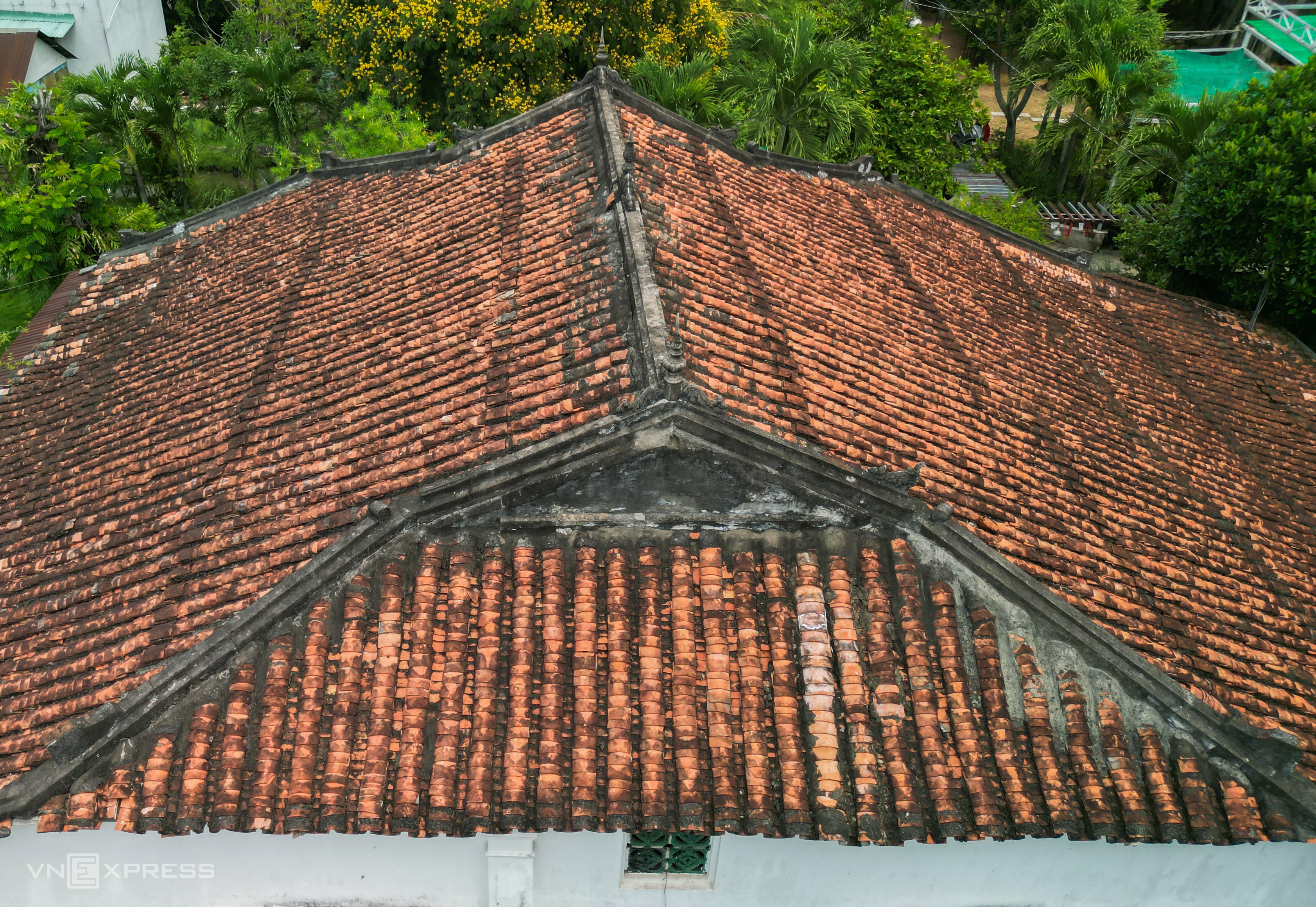 |
From the house pillars to items like the ancestral altar and furniture, everything is meticulously carved with diverse themes. Since its construction, the house has undergone four renovations in 1923, 1996, 2004, and 2006. Quynh Tran |
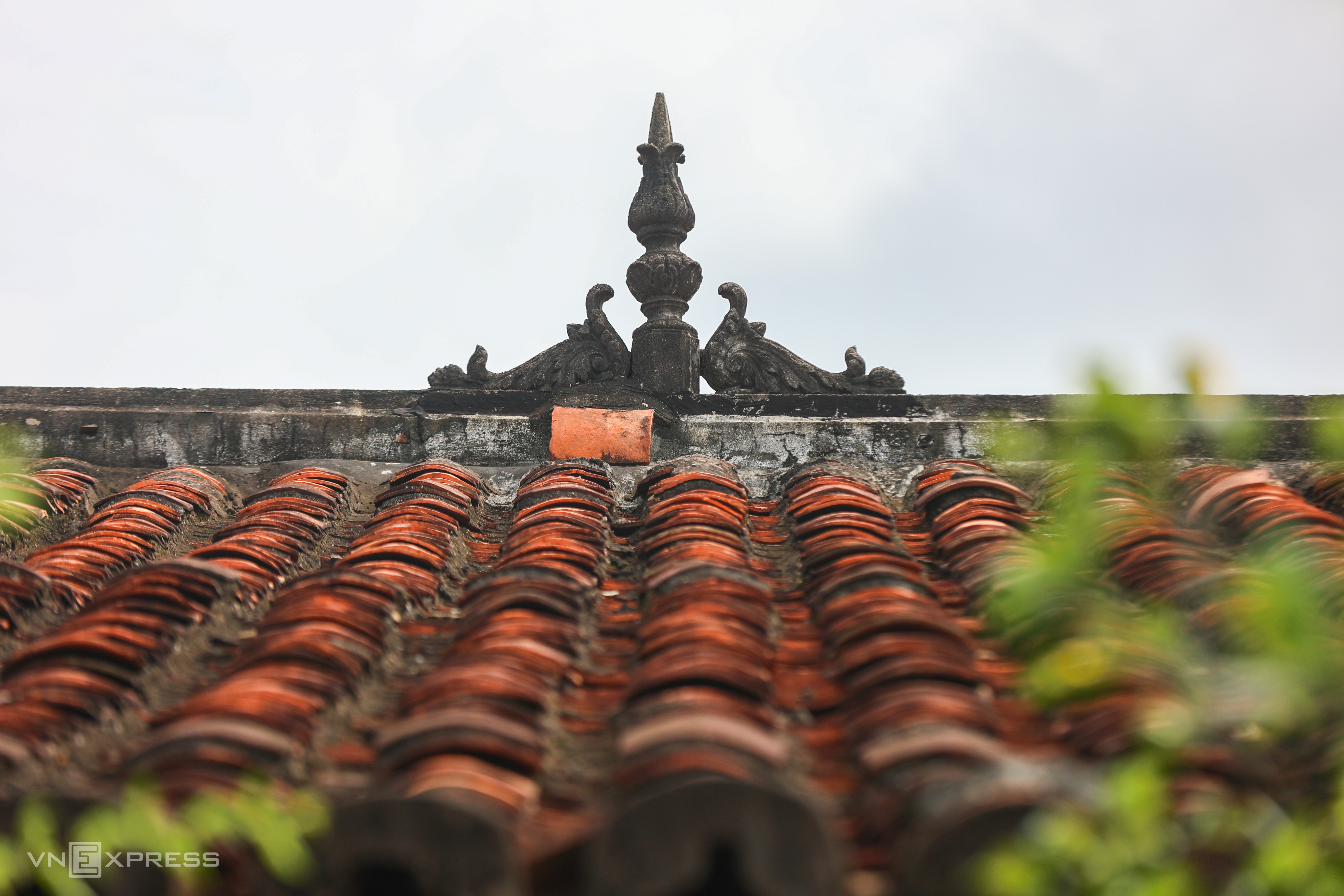 |
The house's front displays three ancestral altars, exuding antiquity with incense burners, altar lamps, horizontal lacquered boards, and glass paintings. The central altar is dedicated to ancestors, while another displays Pham Van Huynh's portrait. Quynh Tran |
The roof is tiled with yin-yang tiles, common in traditional Vietnamese architecture. The roof ridge is decorated with embossed patterns. According to the homeowner, most of the roof retains its original tiles. Quynh Tran
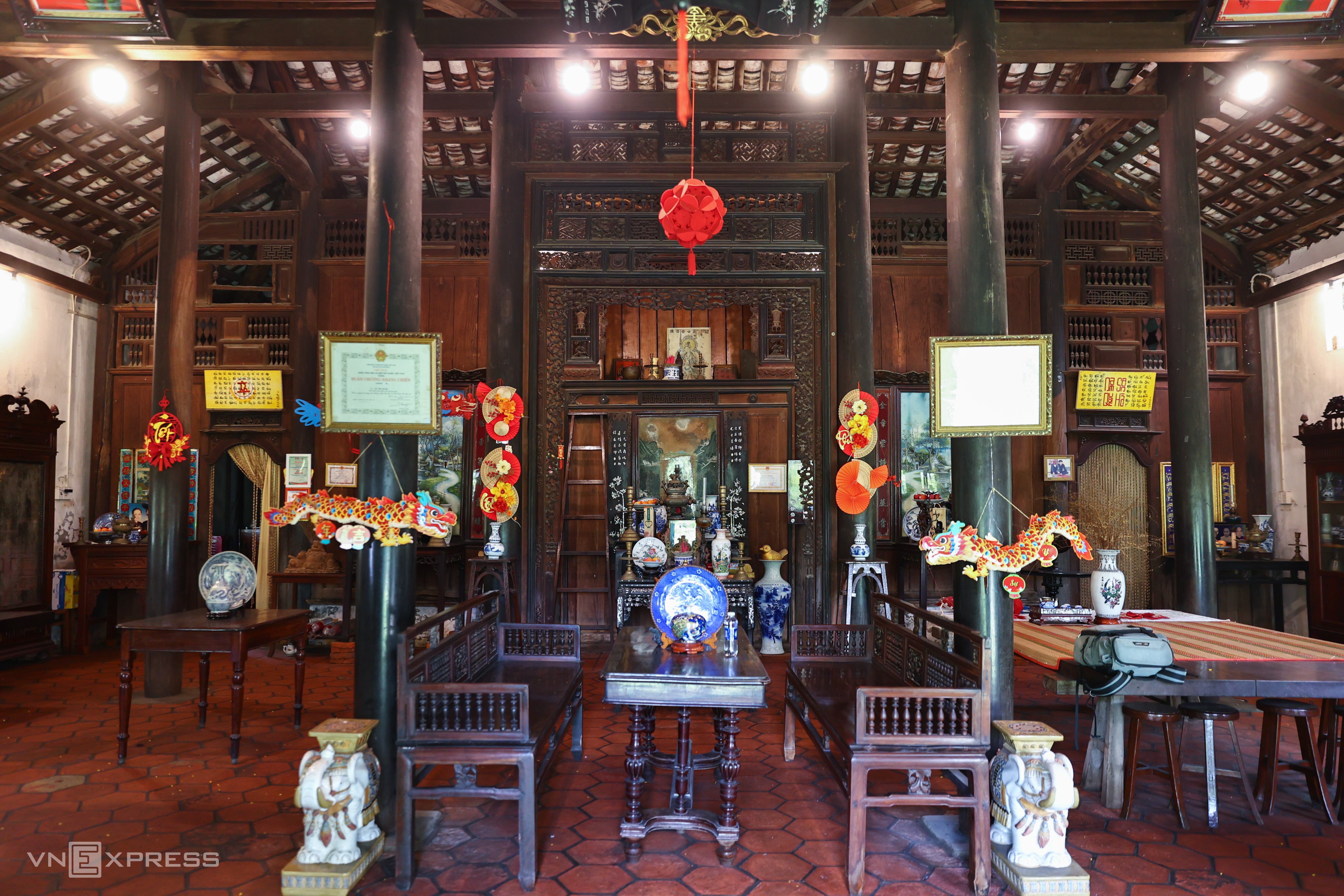 |
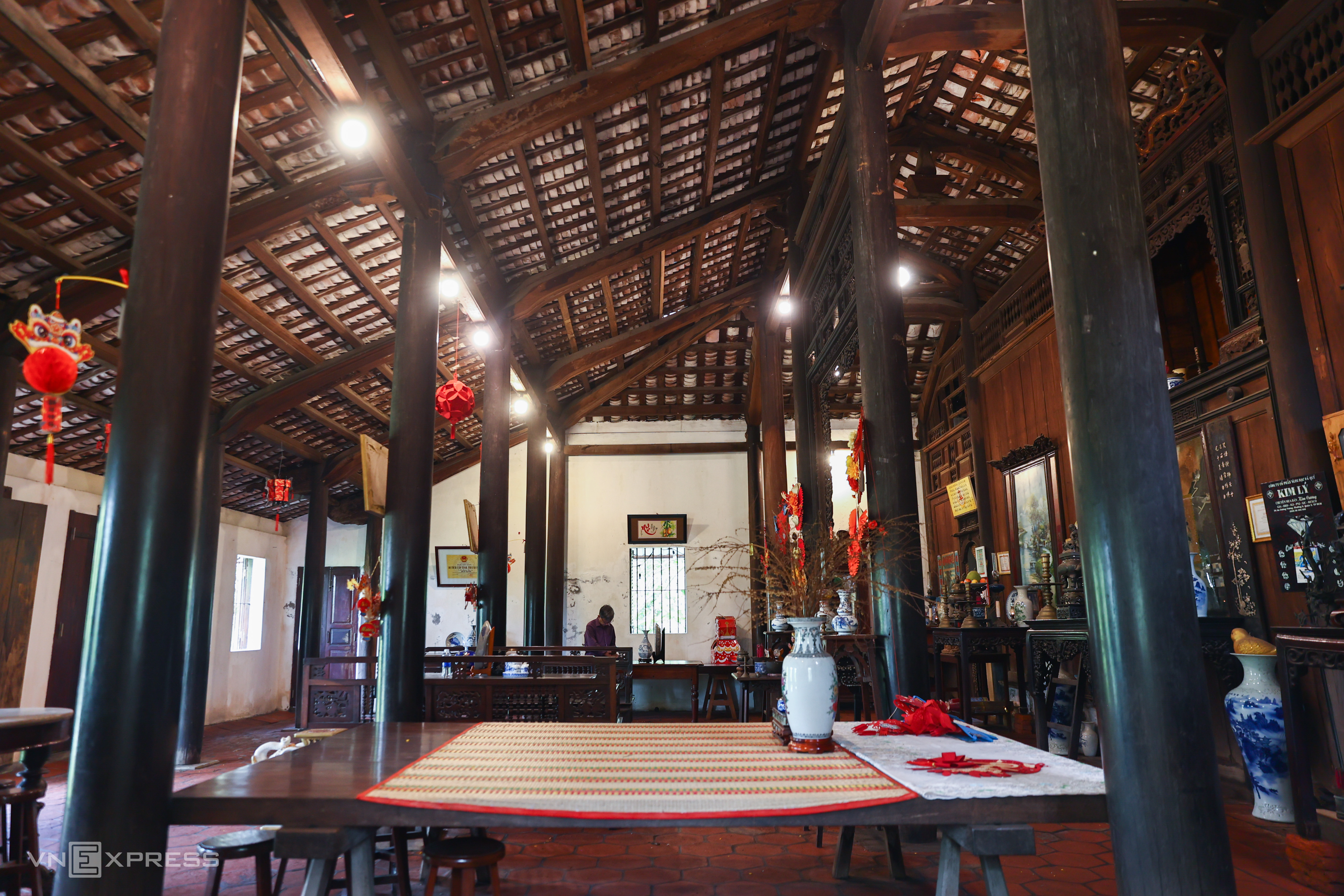 |
The architecture reflects a southern Vietnamese style, with the main hall at the center designed in the "tam gian nhi ha" style (three compartments and two wings). The floor is paved with red hexagonal tiles, the door frames are uncarved and unlacquered. The truss system consists of 36 columns made of precious woods like cam xe and mat, cylindrical in shape and resting on green stone bases. Quynh Tran
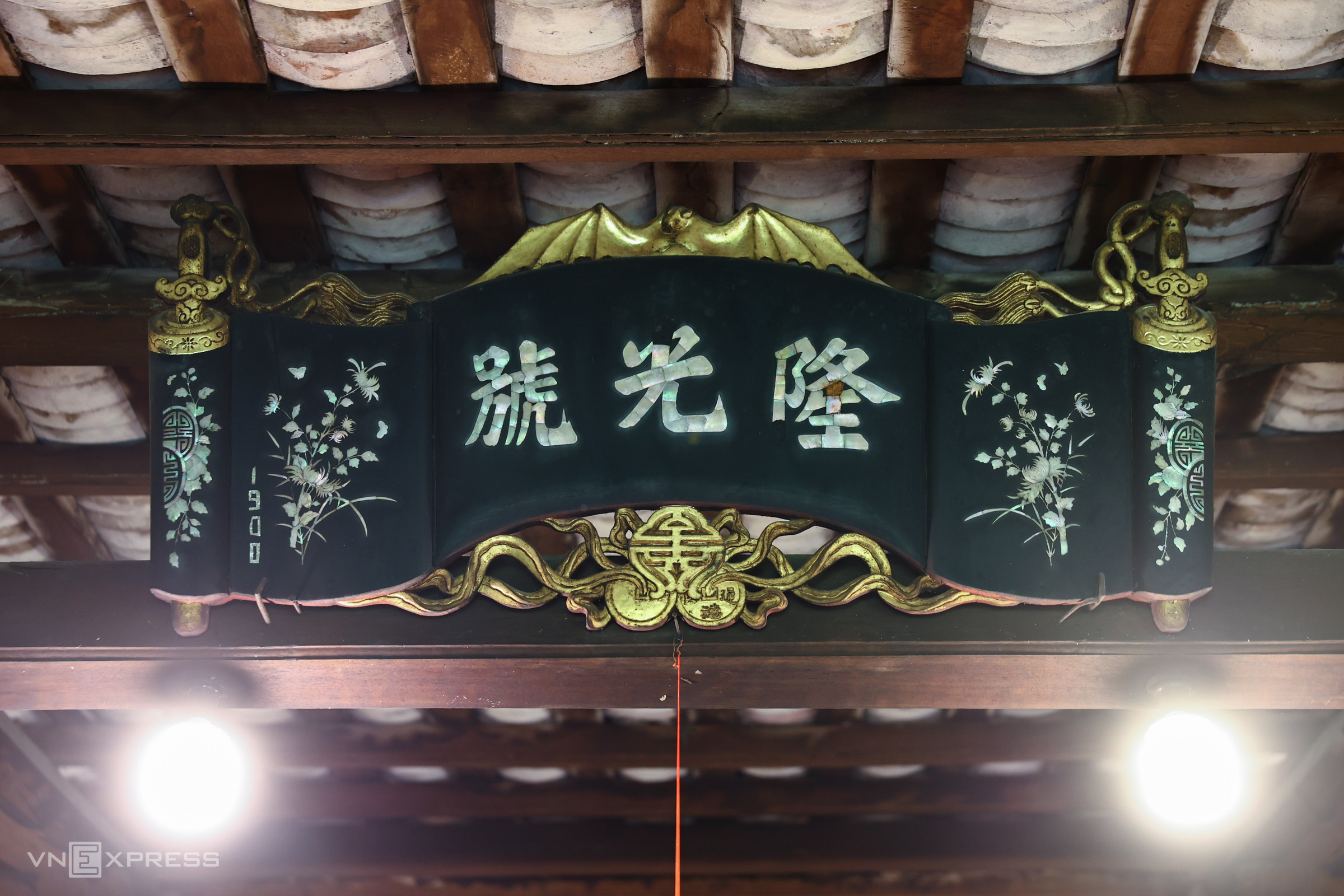 |
A wooden horizontal lacquered board inscribed with the Chinese characters "Long Quang hieu," crafted in 1900 upon the house's completion, hangs from the ceiling. According to Phu, this is the oldest artifact, attesting to the house's historical value. Quynh Tran
 |
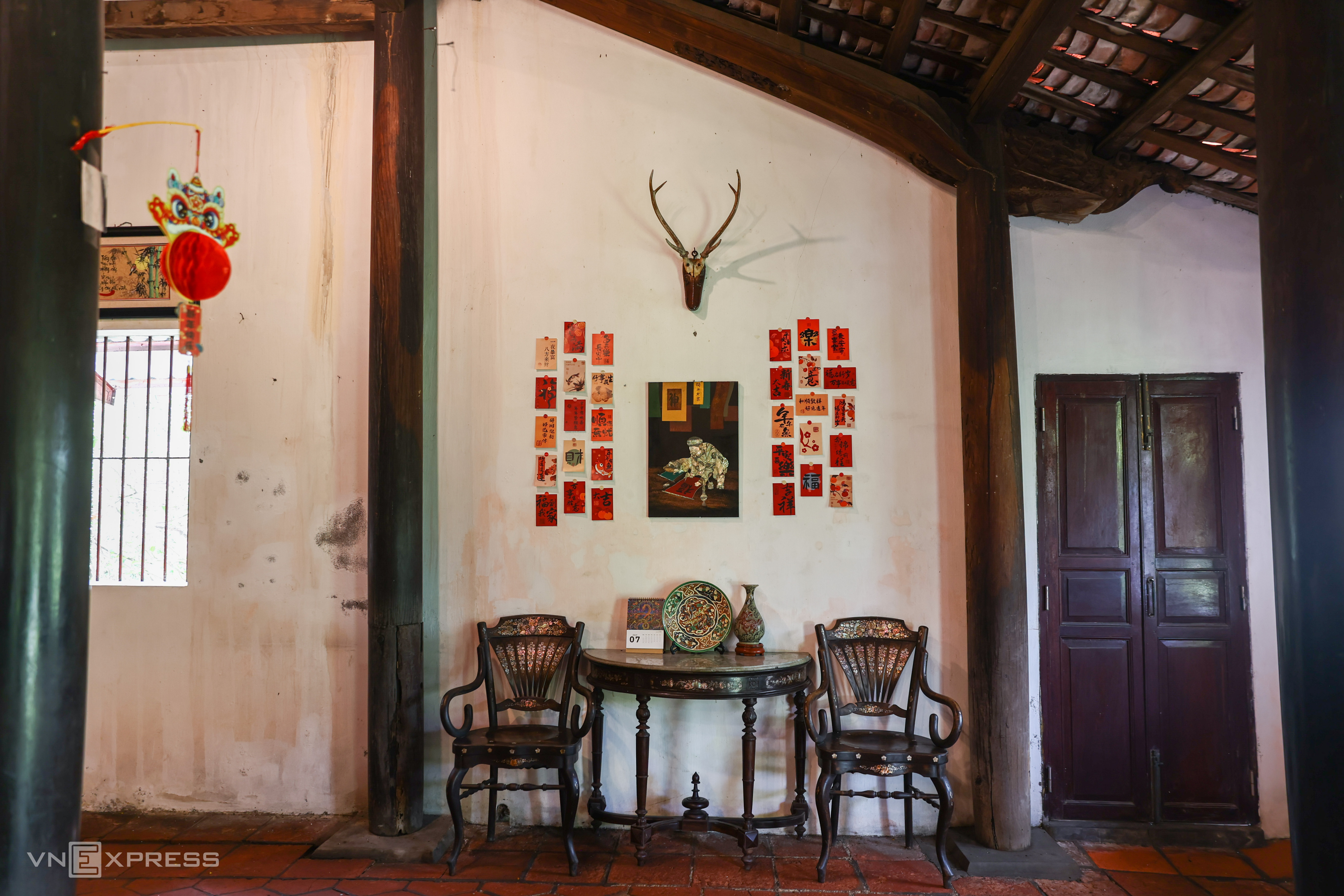 |
The house's interior displays numerous artifacts: antique wooden cabinets, ceramic stools, horizontal lacquered boards, parallel sentences, wooden cabinets and tables, etc. Certificates of merit and resistance medals hang on the front of the main hall.
During the August Revolution of 1945, the house sheltered Viet Minh officials, including the late Professor Tran Van Giau and revolutionary Ung Van Khiem, as they evaded French forces. It also served as a meeting place for the Southern Resistance Administrative Committee.
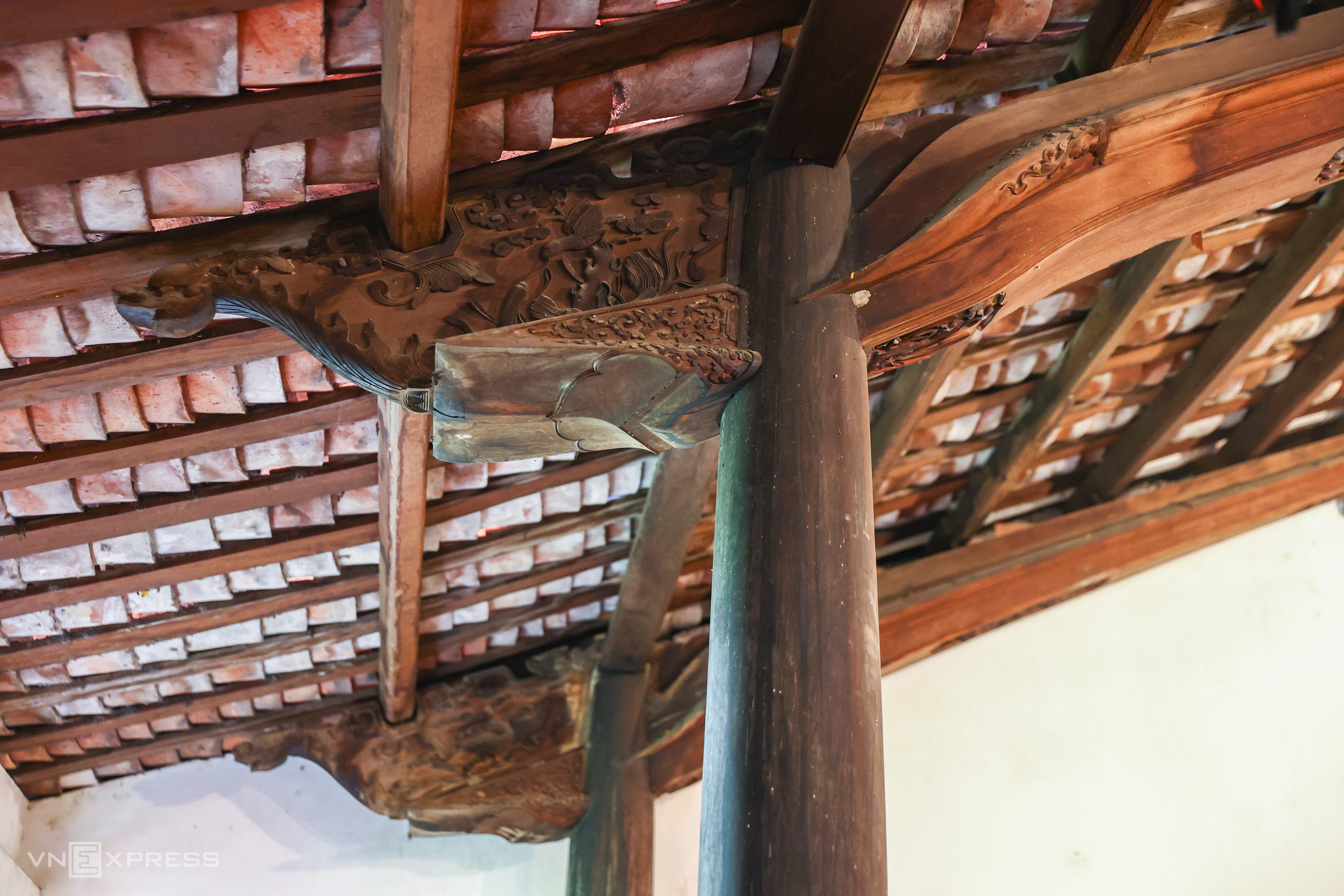 |
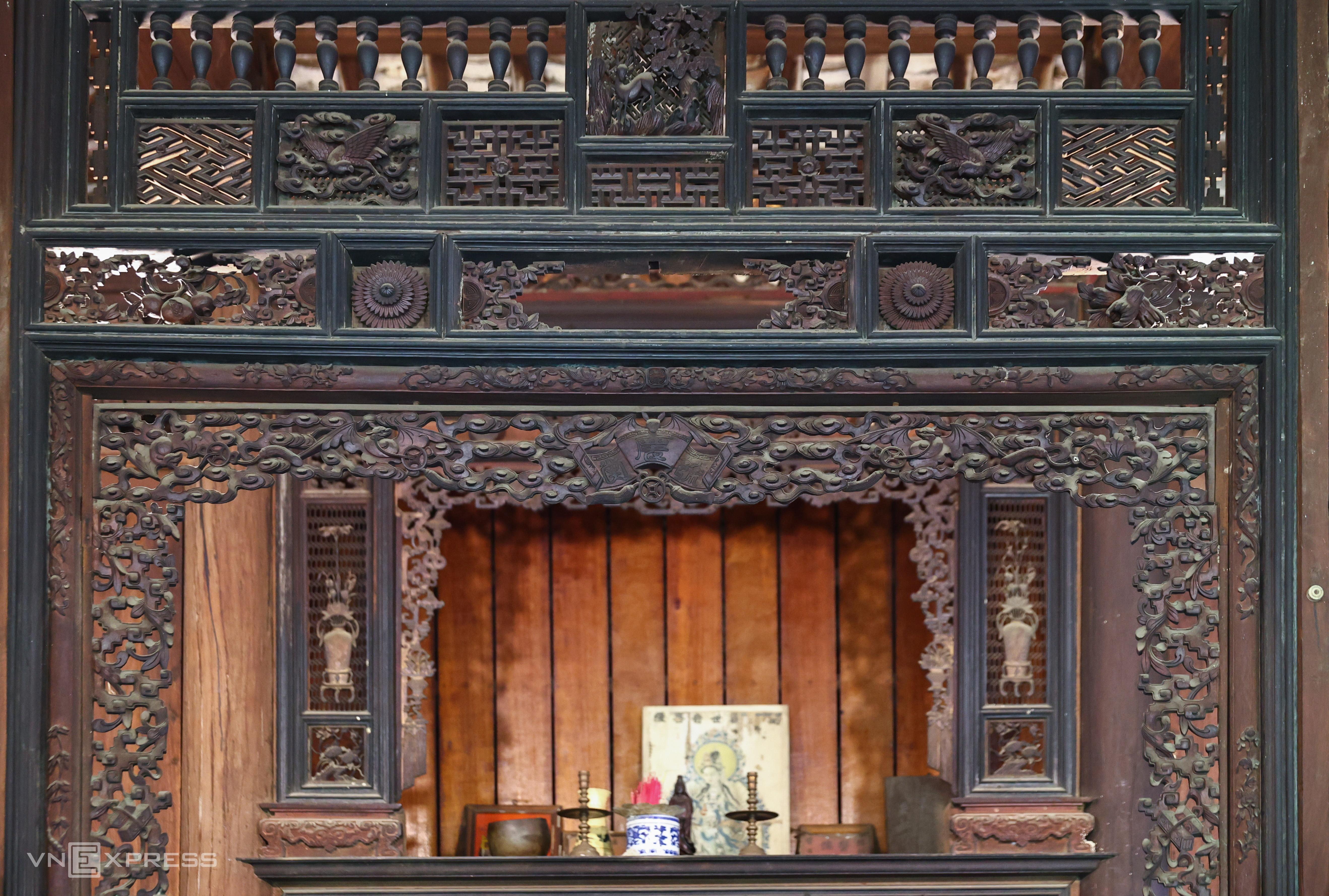 |
From the house pillars to items like the ancestral altar and furniture, everything is meticulously carved with diverse themes. Since its construction, the house has undergone four renovations in 1923, 1996, 2004, and 2006. Quynh Tran
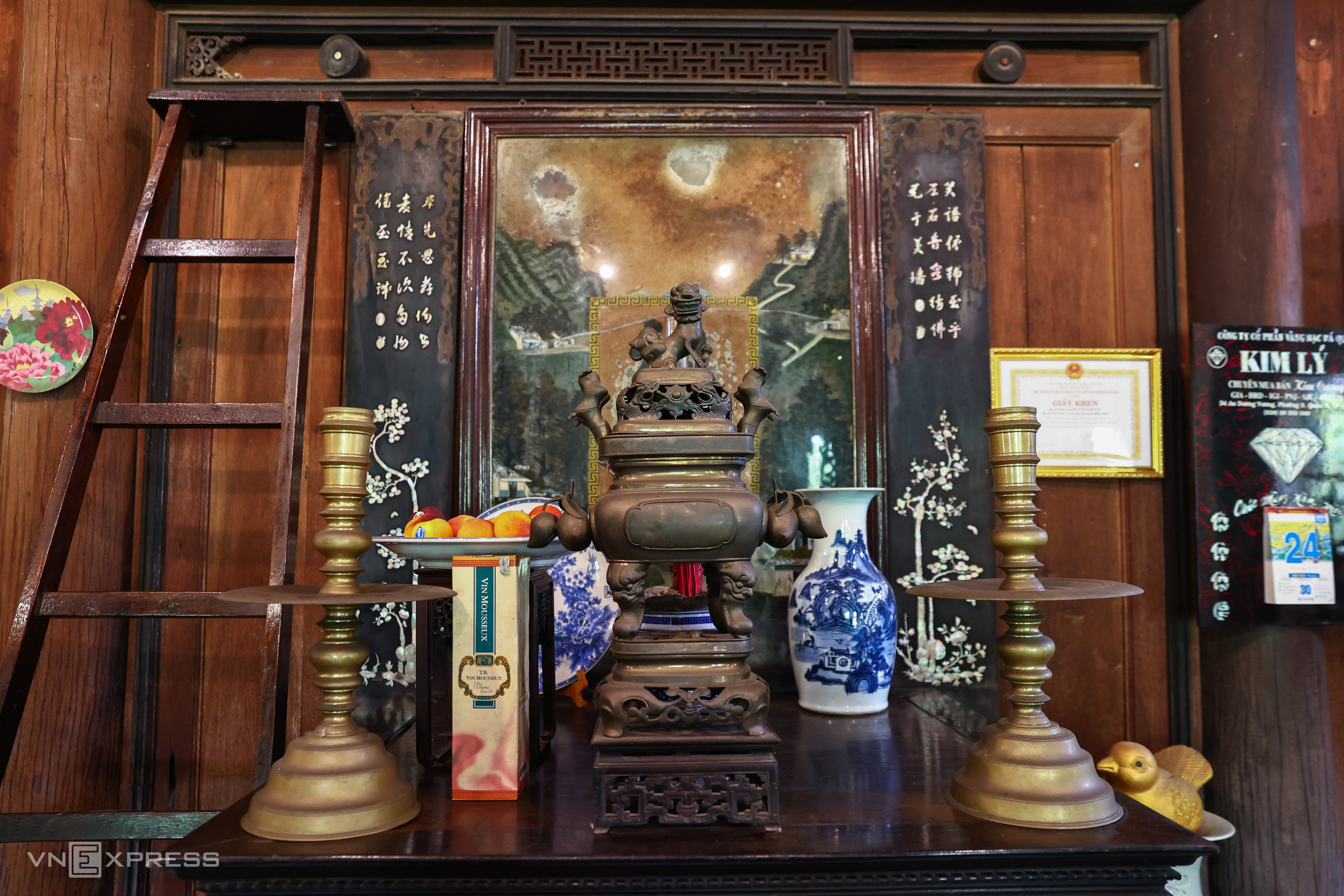 |
The house's front displays three ancestral altars, exuding antiquity with incense burners, altar lamps, horizontal lacquered boards, and glass paintings. The central altar is dedicated to ancestors, while another displays Pham Van Huynh's portrait. Quynh Tran
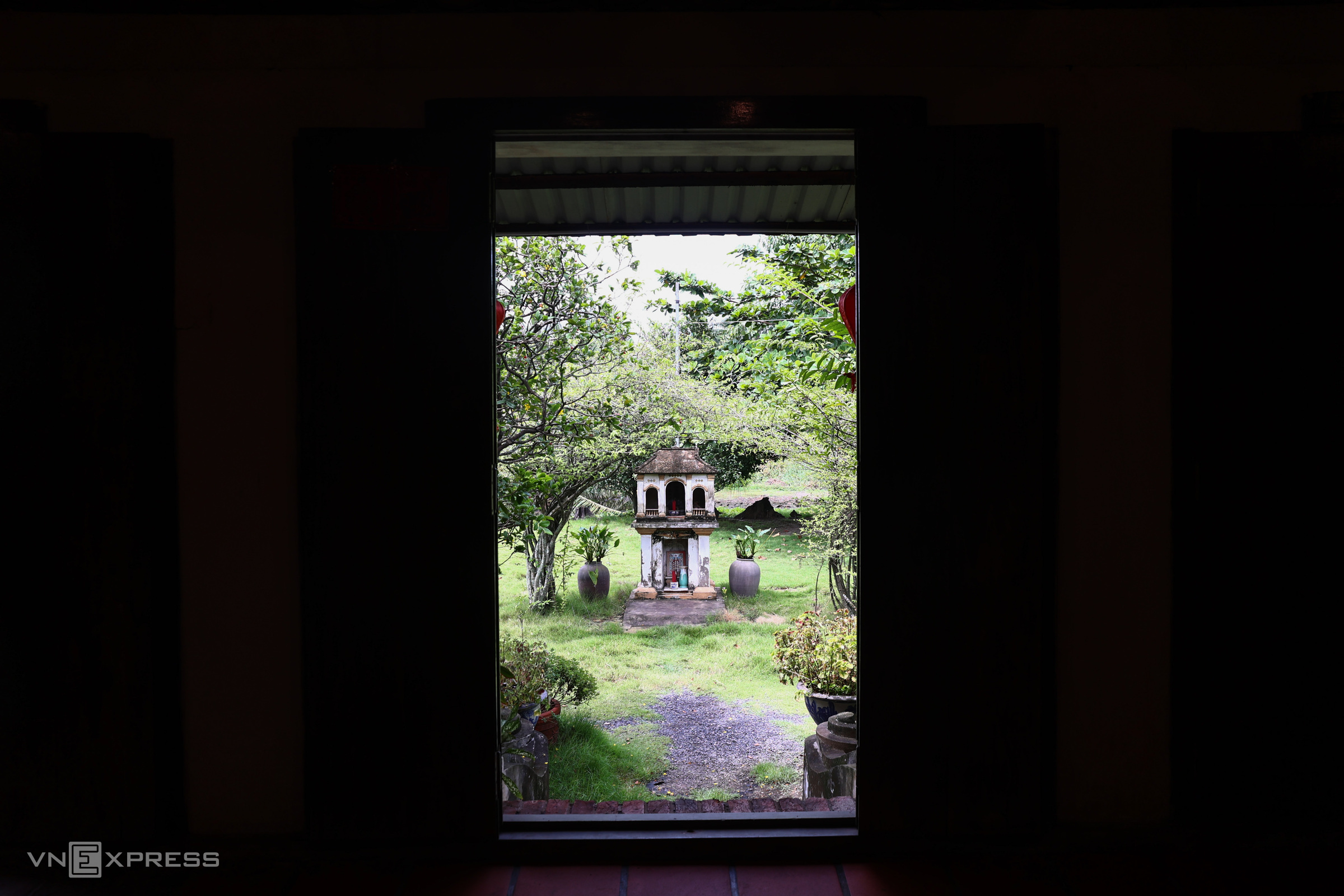 |
Opposite the main entrance, facing a spacious courtyard, is a shrine dedicated to Thien and Ngu Hanh Nuong Nuong (Five Elements Goddesses).
Currently, the house primarily serves as a place of worship, welcoming visitors and film crews. Phu's family resides in a separate house behind the ancestral hall, also within the family's land.
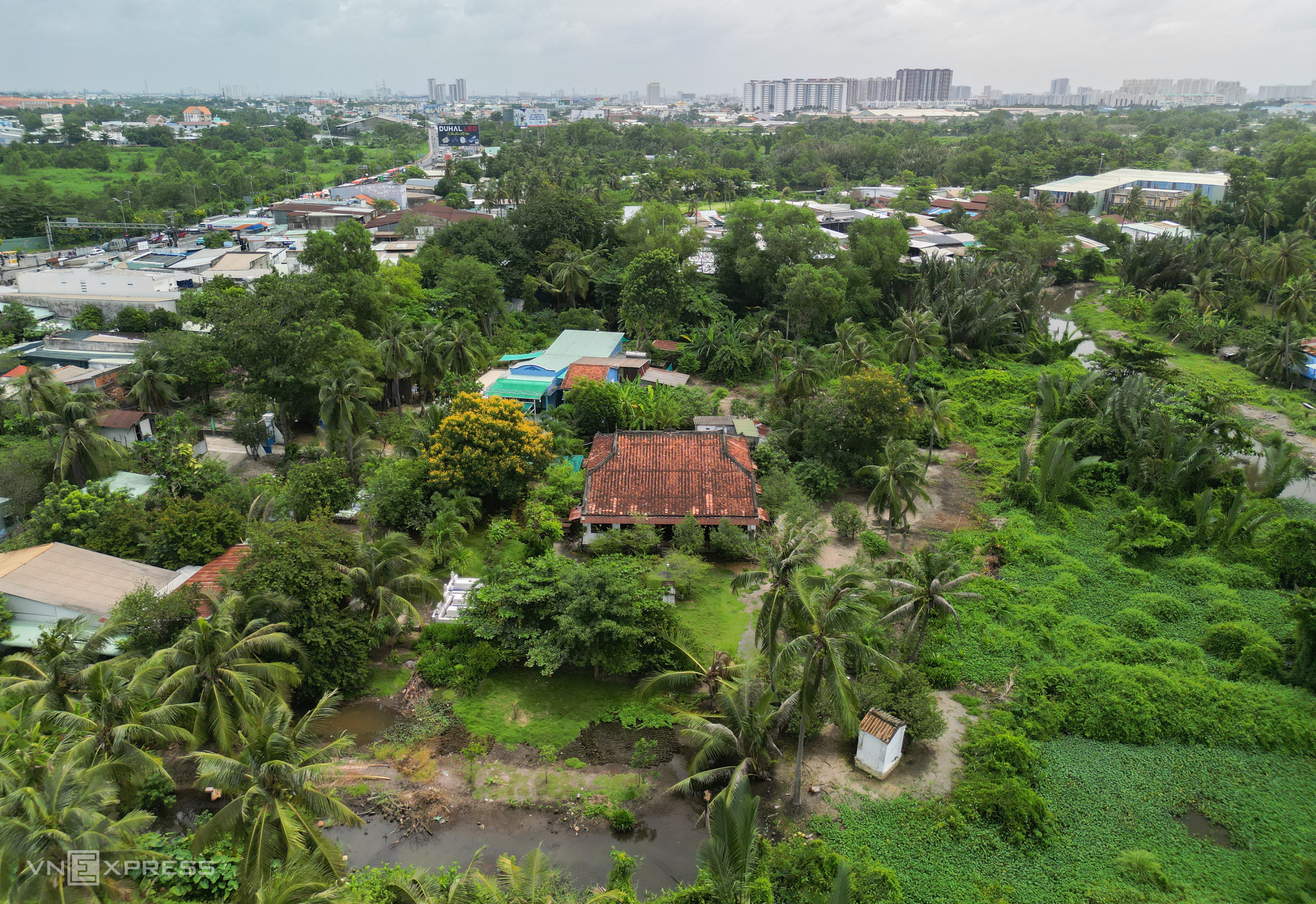 |
The surrounding space encompasses a garden, fish pond, and canal, covering over 2,000 m2. According to Phu, the family's land was once larger, but before 1975, the former government requisitioned and compensated for a portion to distribute to farmers for cultivation.
"The house is gradually deteriorating. I hope the authorities will provide support for its restoration, preserving this city landmark," Phu said.
Quynh Tran



